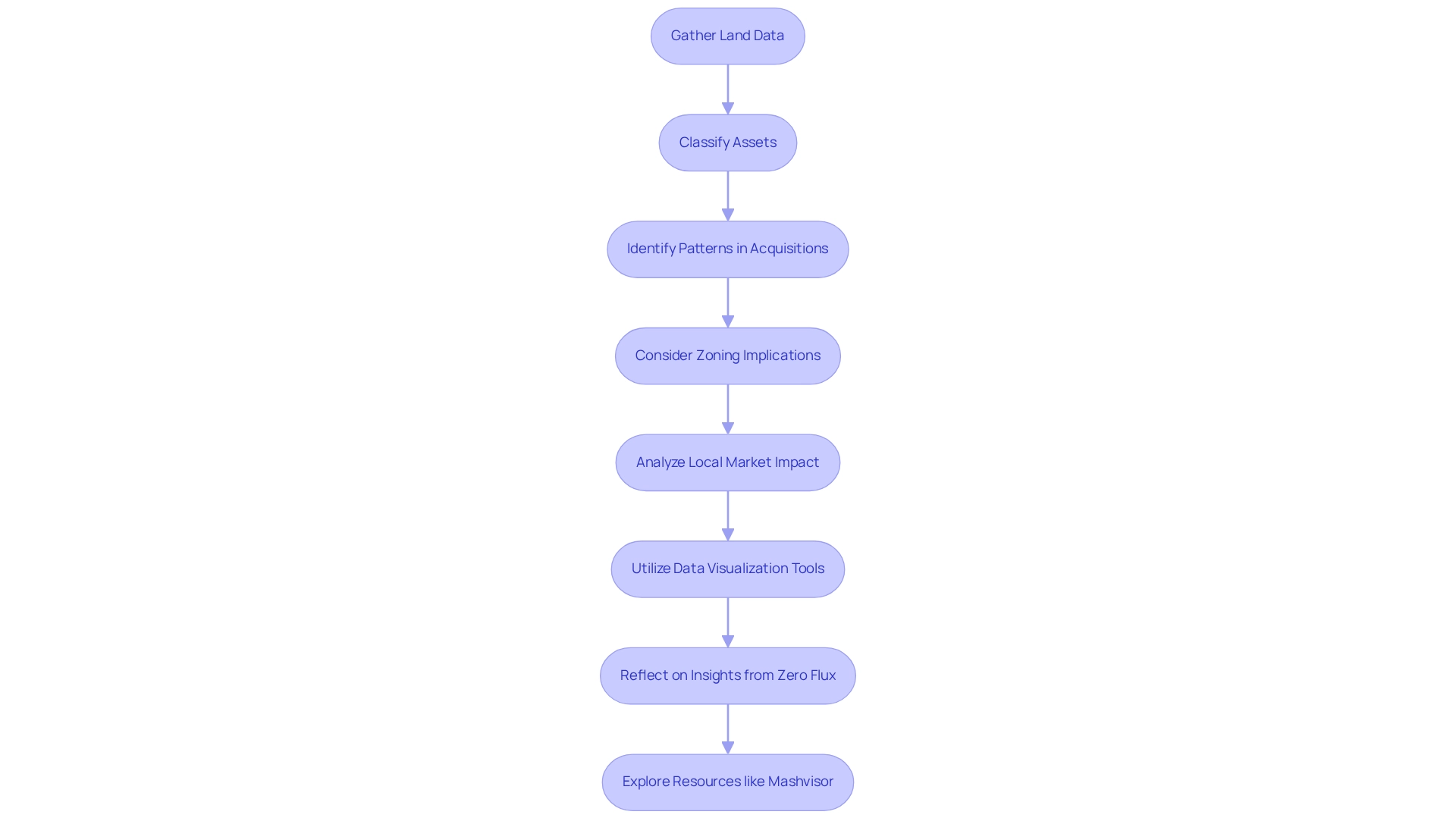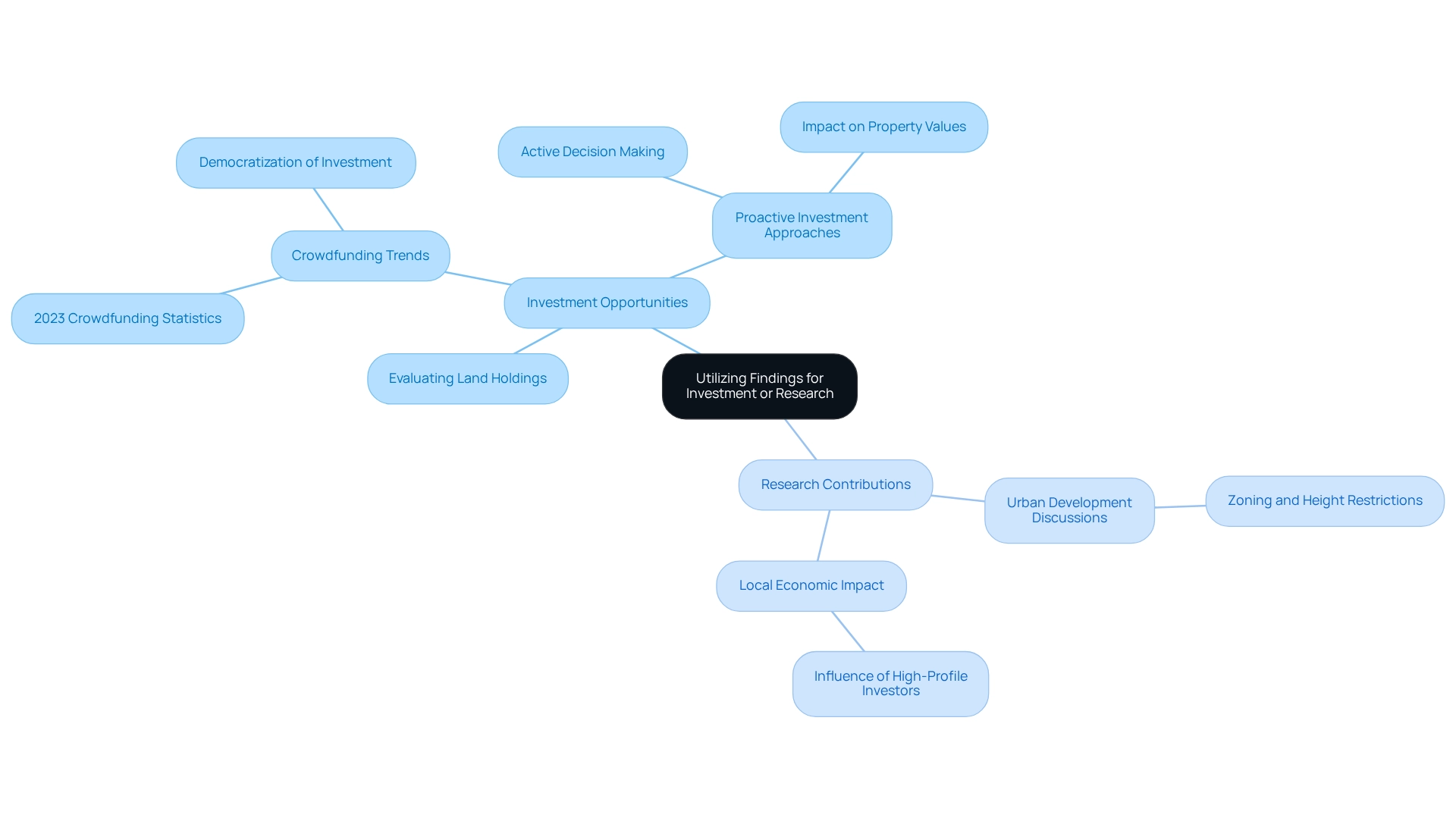Overview
Elon Musk possesses an impressive portfolio of over 4,400 acres of land in Texas, with an estimated value of approximately $3.4 billion. This extensive landholdings primarily serve his business ventures and personal residences. Notably, his concentrated investments in regions such as Austin and Bastrop highlight the importance of understanding local zoning laws and the potential for future developments tied to his investments.
Understanding these dynamics is crucial for investors. The article underscores the significance of local regulations and market trends that can impact property values and development opportunities. As Musk continues to expand his footprint in Texas, the implications for real estate investment strategies become increasingly relevant.
In summary, the details of Musk's land acquisitions not only reflect his business acumen but also serve as a case study for potential investors. By analyzing his approach and the surrounding market conditions, readers can gain valuable insights into making informed investment decisions in the real estate sector.
Introduction
In the realm of real estate, few figures command as much attention as Elon Musk. His land ownership portfolio is as ambitious as his vision for the future. With a staggering 4,400 acres in Texas valued at approximately $3.4 billion, Musk's properties are not merely investments; they serve as the foundation for groundbreaking ventures that could reshape entire communities.
From the burgeoning tech hub of Austin to the planned company town of Starbase, understanding Musk's landholdings requires a keen eye on zoning laws, property values, and the strategic implications of his acquisitions. This article delves into the intricacies of Musk's real estate landscape, offering insights into how investors and researchers alike can navigate this dynamic environment.
By uncovering opportunities and trends, they may define the future of urban development.
Understand Elon Musk's Land Ownership Landscape
Elon Musk's property holdings are primarily concentrated in Texas, where he has amassed a significant portfolio. As of 2025, reports indicate how much land does Elon Musk own, showing that this entrepreneur possesses over 4,400 acres of land in Texas, valued at approximately $3.4 billion. This portfolio includes assets linked to his firms, such as SpaceX and Tesla, alongside personal residences. Notably, Musk's landholdings raise the question of how much land does Elon Musk own, as they are centered around areas like Austin and Bastrop, where he envisions future developments, including a company town named Starbase.
Understanding the zoning laws and local regulations in these regions is crucial, as they can significantly impact land use and rights for both residents and investors. Familiarizing yourself with these essential characteristics will guide your assessment in the subsequent steps.

Gather Data on Musk's Properties and Holdings
To efficiently gather information on Elon Musk's assets, begin by leveraging trustworthy estate databases and public records. Platforms such as Zillow, Realtor.com, and local county appraisal districts prove invaluable for obtaining insights into real estate ownership and valuations. Furthermore, credible news outlets like CNBC and The Wall Street Journal frequently report on Musk's real estate activities, providing essential context and analysis.
For a more comprehensive understanding, utilize data aggregators that compile information from various sources. Focus on key details such as:
- Land size
- Purchase price
- Zoning classifications
- Any recent transactions
For instance, one of the entrepreneur's residences includes a small house that spans an area of 375 square feet, a detail that may be pertinent when considering specific dwelling sizes.
Document your findings systematically to facilitate thorough analysis later on. Remain vigilant regarding any changes in property rights or zoning laws, as these can significantly influence the value and usability of the assets owned by the individual. Additionally, consider the broader context of his investments; as Musk stated, "Creating a self-sustaining city on Mars is the ultimate insurance policy for humanity’s survival," reflecting his visionary approach that may impact his property decisions.
By adhering to these steps and considering the shifting dynamics in the real estate market—highlighted by the case study on Austin's tech landscape—you can construct a robust profile of the entrepreneur's real estate investments, aiding in informed decision-making.

Analyze and Interpret the Collected Land Data
Once you have gathered the data, the next step is to analyze it critically. Begin by classifying the assets according to their function—residential, commercial, or industrial. Look for patterns in Musk's acquisitions, such as how much land does Elon Musk own in areas with high growth potential or near existing infrastructure. Consider the implications of zoning laws and any proposed developments in the vicinity. For instance, if Musk's assets are situated close to proposed transit initiatives or technology centers, this may suggest a tactical investment in upcoming expansion regions.
Utilizing data visualization tools can significantly enhance your analysis. Create charts or maps that clearly illustrate your findings, making it easier to spot trends and correlations. It's crucial to remember that purchasers decide in the initial eight seconds of viewing a home, underscoring the importance of first impressions in value evaluations. Furthermore, assess how much land does Elon Musk own and how these land holdings could affect local property markets, including potential increases in property values or shifts in demographic trends. As Koki Adasi aptly noted, 'The house you looked at today and wanted to think about until tomorrow may be the same house someone looked at yesterday and will buy today.' This highlights the competitive nature of the market and the urgency that Musk's acquisitions may create in local demand.
Ultimately, reflect on how Zero Flux, as a significant contributor in the property information sphere, offers valuable insights that can enhance your understanding of these dynamics. The commitment to quality content not only engages subscribers but also positions Zero Flux as a leading authority in real estate information dissemination. For further analysis, resources like Mashvisor can be beneficial for investors looking to maximize returns and diversify portfolios.

Utilize Findings for Investment or Research Purposes
With your analysis complete, consider how to utilize your findings effectively. If you are an investor, evaluate whether the land holdings in question present opportunities for investment, either directly or indirectly. For instance, if you recognize areas where his innovations are likely to boost property values, you might think about investing in nearby properties.
The recent increase in crowdfunding, which collected almost $20 billion in 2023, underscores a change in the investment landscape that could be leveraged concerning his ventures. This democratization of investment opportunities allows for pooling resources to capitalize on the potential growth surrounding his developments.
Alternatively, if you are conducting research, use your findings to contribute to discussions about territory utilization, urban development, and the impact of high-profile investors on local economies. As Elon observed, 'The percentage of the market that is passive is simply too great at this point. At the end of the day, somebody actually has to make an active decision.' This highlights the significance of proactive investment approaches in relation to how much land does Elon Musk own.
Prepare a report or presentation summarizing your insights, supported by data visualizations and case studies. This can be valuable for stakeholders interested in understanding the implications of how much land Elon Musk owns, including policymakers, investors, and community members.

Conclusion
Elon Musk's extensive land ownership in Texas signifies more than a mere portfolio of real estate; it encapsulates a strategic vision for the future. With over 4,400 acres valued at approximately $3.4 billion, these properties are crucial to his ventures, including SpaceX and Tesla, and they hold the potential to shape the development of entire communities. For anyone looking to navigate this dynamic landscape, understanding the nuances of zoning laws, property values, and market trends is essential.
The process of gathering data on Musk's holdings underscores the importance of leveraging credible sources to create a comprehensive picture. By analyzing these properties—categorizing them by use, assessing growth potential, and visualizing data—investors and researchers can uncover key insights. This analysis not only highlights the strategic nature of Musk's acquisitions but also illustrates the potential ripple effects on local real estate markets and community demographics.
Ultimately, whether for investment or research purposes, the findings regarding Musk's land ownership can inform critical decisions. Investors have the opportunity to capitalize on the growth surrounding his developments, while researchers can contribute to vital discussions on urban development and the impacts of high-profile investments. As the landscape continues to evolve, those who actively engage with this information will be better positioned to understand and leverage the opportunities arising from Musk's ambitious real estate ventures.




